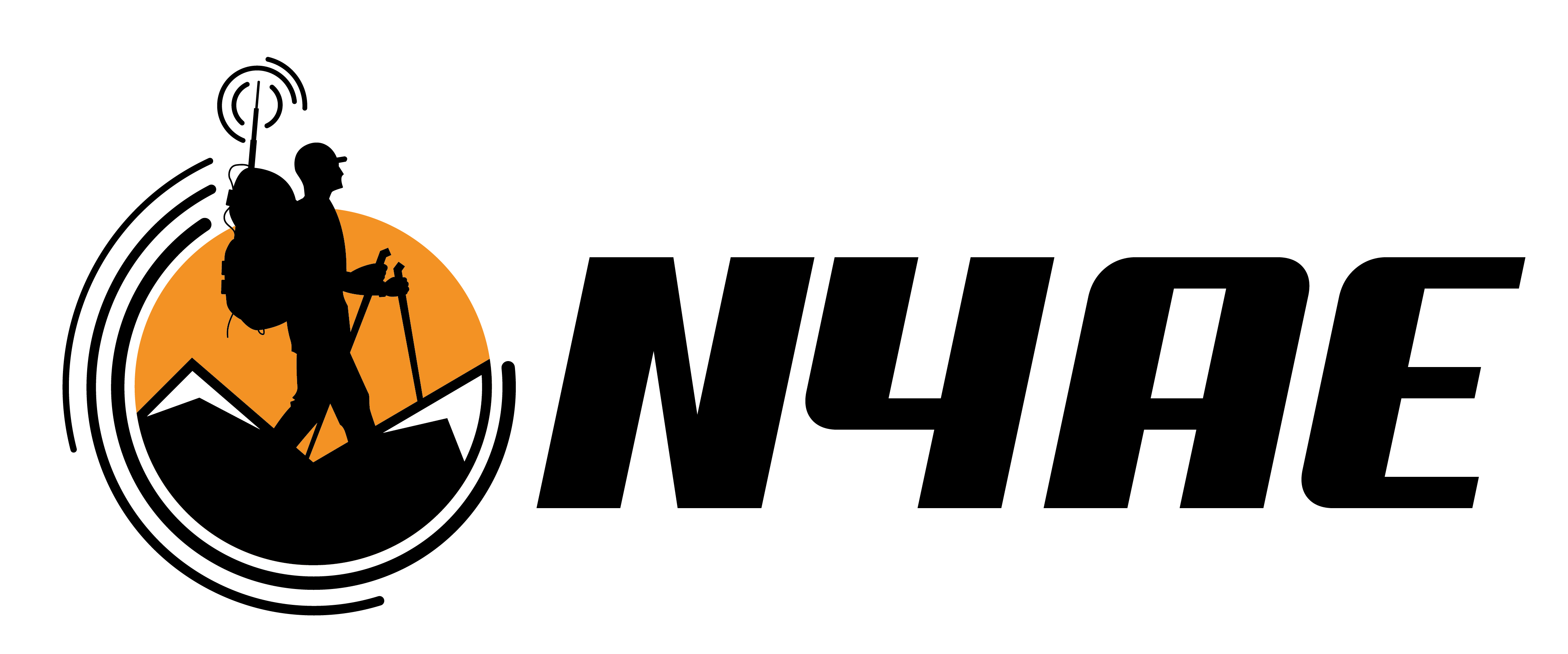What is Near Vertical Incident Skywave?
This article is the first in a series on Portable NVIS Communication. This series focuses on short-haul communication during a disaster in the Amateur Radio Service.
The Donut Hole Dilemma
When stations are less than 50 miles apart, high frequency (HF) communication uses ground wave propagation. For distances greater than 300 miles, sky wave propagation is the only practical solution for HF.
The middle ground, the range between 50 and 300 miles, is a “skip zone.” Conventional antennas cannot provide reliable coverage because signals skip over this zone.

Viewed from above, the skip zone looks like a giant donut hole.

This “Donut Hole” is a major obstacle for tactical communication. Inside it, stations cannot communicate with each other.
Filling the Donut Hole
During World War II, the Germans discovered that army units close to one another had more reliable communication when antennas were close to the ground. This discovery led to the development of antennas that aim signals at the ionosphere.
Signals bounce off the atmosphere, creating coverage that resembles an upside-down ice cream cone. Stations within the coverage radius have reliable communication almost any hour of the day.

The name for this technique is Near Vertical Incident Skywave, or NVIS. It remains the cornerstone of tactical military HF communication to this day.
Why NVIS is Important to Ham Radio
Amateur Radio operators often find themselves inside the Donut Hole during a disaster. Effective communication with other stations nearby can be difficult. VHF and UHF repeaters often fill coverage gaps, but only if wide-area systems remain available. Without repeater coverage; HF becomes the only option, and NVIS the best technique.
Because it is so reliable in this situation, the NVIS antenna should be part of every amateur’s disaster communication kit.
Near Horizontal vs. Near Vertical
There is no fundamental difference between NVIS and conventional skywave propagation. The distinction arises from different radiation patterns.
- Near Horizontal (NH) antennas have take-off angles between 20- and 60-degrees.
- Near Vertical (NV) antennas have take-off angles between 70- and 90-degrees.
NH antennas are nothing more than dipoles set high above the ground. Amateur, Military, and Commercial stations use them every day for long-distance communication.
In most cases, an NV antenna looks exactly like an Inverted Vee antenna. The only difference is the apex of the Inverted Vee is 10 to 12 Feet above the ground. The proximity to the ground changes the radiation pattern. At such low heights, the pattern has a near vertical forward lobe, aimed straight up.
Three Keys to NVIS
When using NVIS antennas, we must pay attention to three factors more than with sky wave propagation.
- Critical Frequency (CF) – The limiting frequency for a vertical incident. Above this frequency, signals escape the atmosphere and are unusable.
- Maximum Usable Frequency (MUF) – The highest usable frequency between two points at a specific time in the day. We calculate MUF by using CF and the angle necessary to communicate with the other station.
- Frequency of Optimum Traffic (FOT) – The highest effective frequency usable for a specific path and time for 90% of the days of the month. The FOT is lower than MUF.
I will discuss these factors in greater detail in future articles.
The Take Away
The NVIS antenna provides reliable communication at distances too far for repeaters and too close for sky wave.
When part of a kit that includes an end-fed dipole, Amateurs will have reliable HF communication at almost any distance. For these reasons, every Amateur should have an NVIS antenna for disaster communication.



















